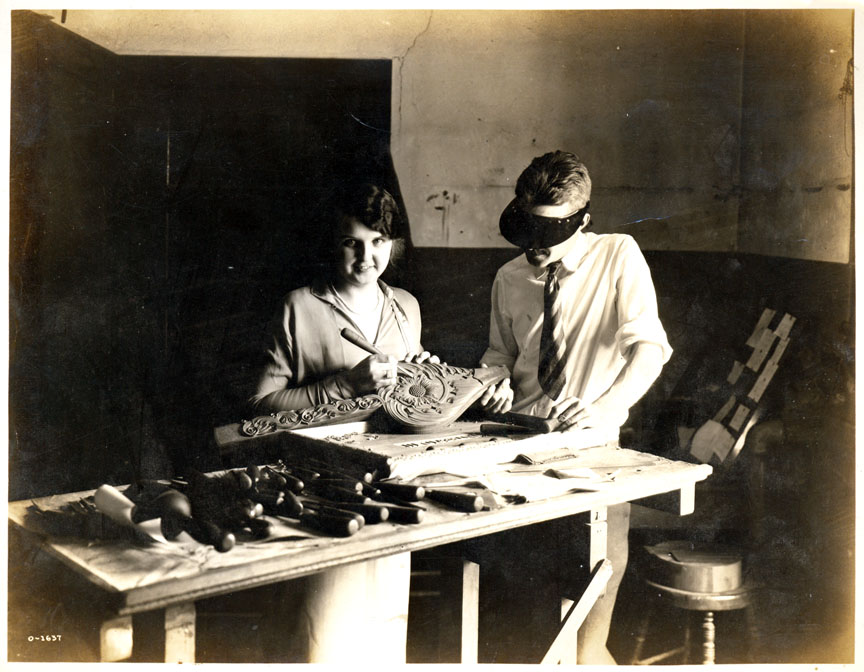Enthusiasm and anticipation lined the pages of local newspapers throughout much of 1924, following The Asheville Citizen’s Jan. 7 announcement of the “Great Southern Exposition.” The event, scheduled to take place the following year in New York City, was “dedicated to the important purpose of showing [the country] that they have not heard half of the story of the South’s advancement in the past 30 years,” declared the Jan. 8 edition of The Asheville Citizen.
A yearlong print pep rally ensued. The paper regularly touted the region’s economic potential and progress via its abundance in natural resources. One editorial, featured in the Aug. 2, 1924, edition of The Asheville Citizen, described the South as undergoing an “industrial renaissance.” Its continued rise, the piece concluded, benefited everyone: “To boost the South is to boost all the United States.”
Asheville’s participation in the expo began taking shape in the late summer and early autumn of 1924. Pamphlets promoting the region were in the works, as was a statewide motion picture “presenting an intimate record of the daily expressions of life in this State,” The Asheville Citizen reported on Oct. 11.
By November, additional word arrived: A giant relief map of Western North Carolina would be displayed at the exhibit, denoting major mountain peaks, lakes, waterfalls, gorges and highways. Meanwhile, mountain crafts, including pottery, weaving, woodcarving and basketry would also be featured in an Asheville exhibit.
But as 1924 came to a close, the paper reported the Southern Exposition’s postponement; the January event was being pushed back to November in order for states to appropriate additional funds for their exhibits.
Despite the setback, the newspaper’s enthusiasm (and spin) remained high. On Dec. 3, 1924, The Asheville Citizen presented the delay as a chance to find new ways of contributing to the expo, declaring:
“Here is opportunity, large and alluring, for any man who can produce ideas. A new and practical idea advertising the South, describing one of her resources or summing up her amazing possibilities, will bring treasure to the South and reputation to its originator.”
Later in the same piece, the paper likened the event to battle. “Through this Southern Exposition the South is undertaking to carry a war of conquest into the realms of business to the North and West of us,” it proclaimed, insisting that the campaign’s success required all hands on deck. “It is up to the South, who before the Civil War dominated both the business and the politics of America, to show the remainder of the country that in the South is the home of big opportunity in America today.”
Whether this battle cry factored into the Southern Exposition’s earlier launch date is unclear. Nevertheless, the November schedule was ultimately pushed up to May.
Throughout the expo, The Asheville Citizen continued its campaign of unmitigated approval and promotion of the city’s contributions to the greater South. For example, in a May 25 report, the paper featured a series of unattributed quotes praising the Biltmore Industries (which participated in the two-week event). According to The Asheville Citizen, Biltmore’s homespun suits were lauded by a number of attendees who shared a common declaration: “The most satisfactory fabric I have ever worn.”
Meanwhile, Roger Miller, manager of the Asheville Chamber of Commerce, praised the city and region’s local talents. “The mountain arts and crafts industries are worthy of the best support we can give them,” he told the paper. “The Southern Exposition provided an extraordinary advertising opportunity and our display will result in greatly increasing the demand for the products of the mountain industries.”
A similar theme followed in the next day’s paper. Once again, The Asheville Citizen spotlighted the region’s arts and crafts, with a particular focus on the area’s pottery. According to the article, “two of the leading potteries of this section was almost entirely exhausted by the sales during the first week of the exposition and it was necessary to replace the display with a second shipment.”
Once more, Miller shared his thoughts with the paper, commenting, “The arts and crafts of this region offer an unusual opportunity for profitable development … and there is no longer any questions concerning the demand.”
Because of the city’s success at the expo, the paper continued, the chamber planned to host a similar, albeit smaller, local expo that summer “for the purpose of advertising these industries to the thousands of tourists who will come to Asheville from all sections of the United States.”
The Mountain Arts and Crafts show took place in August 1925. According to the paper, the event drew thousands.
Editor’s note: Peculiarities of spelling and punctuation are preserved from the original documents.




Before you comment
The comments section is here to provide a platform for civil dialogue on the issues we face together as a local community. Xpress is committed to offering this platform for all voices, but when the tone of the discussion gets nasty or strays off topic, we believe many people choose not to participate. Xpress editors are determined to moderate comments to ensure a constructive interchange is maintained. All comments judged not to be in keeping with the spirit of civil discourse will be removed and repeat violators will be banned. See here for our terms of service. Thank you for being part of this effort to promote respectful discussion.